Marvin crunches the 50-state Floriculture Crops data
It’s Christmas in May for Hortistician Marvin Miller, who summarized the new USDA Floriculture Crops data for us before the ink was barely dry.
What I thought was unique about this year’s data (for the 2021 calendar year) was that for the first time ever the USDA surveyed all 50 states, not just 36 or 17 as they have in the past. But Marvin found something else unique about the survey: its online format.
Here’s his first pass at the data. Expect more in-depth analysis in coming weeks:
USDA’s National Agricultural Statistics Service released the Floriculture Crops data for the 2021 calendar year on Wednesday afternoon. This now details production and sales for all 50 states, 28 of which are separately enumerated, while the other 22 are grouped into “other states.” This compares to only 17 states previously included in the program in 2020. This report also has added 30 new crops to the annual report, which has increased the program coverage for all industry segments.
Unfortunately, there is no “tidy” report format, such as we’ve had in the past, with all data on any crop presented in one table. Instead, one must know what stat(s) you are looking for, query USDA’s Quick Stats app, and then that stat(s) is downloaded. (Author's note: FRUSTRATION in ALL CAPS!!!).
Nevertheless, I have pieced together a preliminary look at the data and offer the following:
The total sales for all 50 states for 2021 was $6,430,424,000. This compares to $5,544,587,000 reported for 50 states in the 2019 Census of Horticultural Specialties, which was the last USDA report on 50 states of floriculture sales. This suggests we have had an increase of 15.98% over the two years ($885.8 million).
For the 17 states that were the basis of the 2020 Floriculture Crops Summary, the 2021 tally was $5,100,855,000. This compares to the 2020 total of $4,645,297,000, which suggests an increase of 9.8% over just the last year in these 17 states.
The number of floriculture producers totaled 9,558 in 2021 across the 50 states. For the 17 states surveyed in 2020, the 2021 grower count increased by 8.1%.
The 2021 Floriculture Production Pie chart of finished floriculture sales for the 50 states looks a bit different than the chart based on the 2020 report of 17 states and even the chart that one might draw from those same 17 states using 2021 data.

Two free webinars: Organic edibles, traditional vs. high-tech greenhouses
I like to keep you posted on upcoming webinars—which are coming at me hot and heavy lately! Here are two more (learn more and sign up for both at www.growertalks.com/webinars).
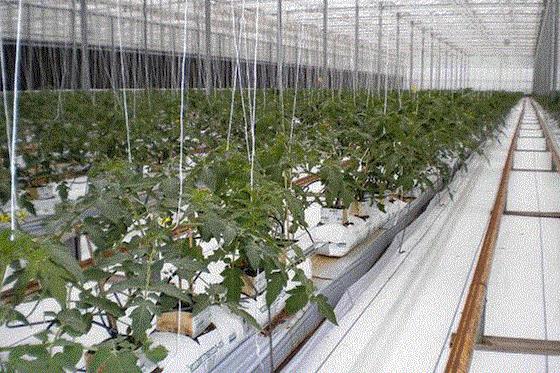
Edible Crops: Challenges of Organic Production in Greenhouses
Consumer demand is on the rise for greenhouse-grown, organic-certified edible crops. But plant production can be a challenge for growers, who have to select organic fertilizer programs, growing media and other inputs that comply with organic standards and still produce quality crops.
My guest for this one is Susan Parent, a Horticulture Specialist for Premier Tech (the company behind PRO-MIX). It will be on Thursday June 2 at 2 p.m. Eastern/1 p.m. Central. Susan will highlight some of the practices used by organic growers, common challenges you all face, and how biological active ingredients in growing media are used to enhance plant growth.
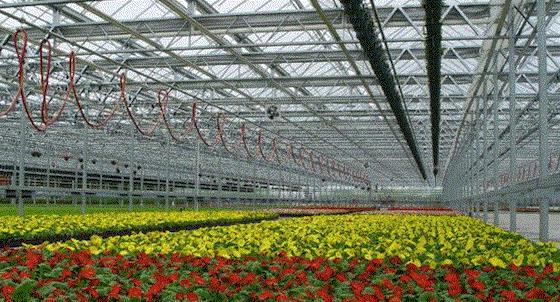
Greenhouses: Traditional vs. New Technology
With labor, energy and input costs going through the roof, I’ll bet you’re looking to get more efficient in the greenhouse, right? To that end, I’m hosting a free webinar titled “Greenhouses: Traditional vs. New Technology.” It’s slated for Wednesday, June 8 at 2 p.m. Eastern/1 p.m. Central.
My guest experts, representing the greenhouse structures and environmental control sectors, are Al Sray, Senior Account Manager for Prospiant, and Brent Ford, Business Development Representative from Argus Controls. These gents will be addressing a range of topics, including:
- General greenhouse selection criteria, including style, glazing, location considerations, system strategies and trends for various crops
- System selection, including heating, cooling, lighting, air movement, irrigation and CO2 injection
- Overall trends in the marketplace, including old school vs. new school, emerging technology and what the future holds
Again, sign up for either or both at www.growertalks.com/webinars.
As always, I’ll be your host for these webinars, so you know they will be fast-paced, informative and fun!

How was May 21-22?
As the scores rolled in, I thought, “Boy, what a crappy weekend for most of my readers!” I had typed 30 scores into my fancy spreadsheet before getting my first 10s—from a reader representing Maine, New Hampshire and Vermont. Up to that point, the U.S. average was 5.8. Those three 10s got us to 6.3—still terrible for the third weekend in May.
However, by the time the tallying was done, we’d achieved the reasonable scores of 7.1 in the U.S. and 7.7 in Canada. Nothing compared to the last two crazy years, but not too far from typical, as you’ll see in the next section.
Here’s the map:
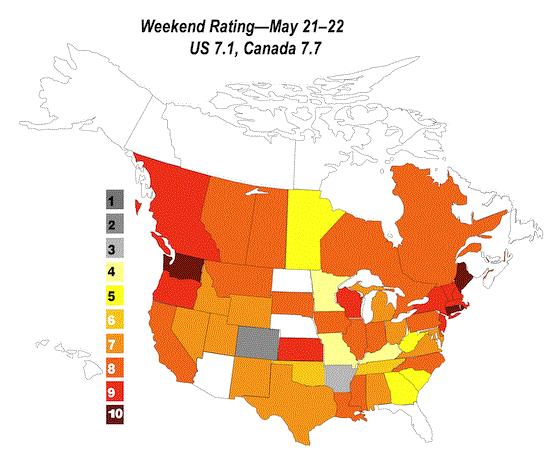
That’s based on 100 scores from 44 states and 7 provinces (still no word from the Northwest Territory or Yukon).
Where was it good?
Here are the regional scores:
New England 9.3
Northwest 8.7
East 7.9
Plains 7.8
West 7.3
Midwest 6.5
Mountains 5.9
South 5.8
The two upper corners of the country were the national hotspots. The Pacific Northwest finally caught a break and scored 8.7 as a region, with Oregon averaging 9.0 and Washington scoring a pair of perfect 10s. British Columbia was slightly more mixed, with scores ranging from 6 to 10, but it averaged 9.7.
New England killed it as well, scoring 9.3 as a region. They’ve had a good season thus far!
The East also finally caught a break and scored 7.9. Virginia, which suffered heat and humidity, dragged down the East by scoring just 6.5. That was the story for the South, where the season is winding down and it always gets hot and sticky this time of year.
The Midwest had rain that either washed out Saturday or the entire weekend, depending on where you were. Poor Minnesota, which just had a decent weekend, dropped to an early April-like 3.5. But states like Wisconsin and Illinois, which had washouts on Saturday, made up for it on Sunday.
And out in lovely Colorado it snowed, giving that state a snappy 2.0—the lowest score of our 44 states and 7 provinces. Contributor Aaron Van Wingerden of Dutch Heritage Gardens sent me this photo from what I presume is his front yard.
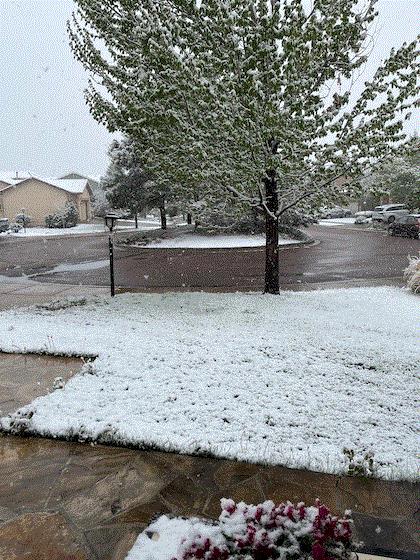
I don’t do Canada as regions; but Quebec was 8, Ontario was 8.3, Manitoba was 5, Saskatchewan was 8, Alberta was 8 and BC was 8.7. Good, but not great, especially compared to the 10-year average of 8.4, as you’ll see below.

Compared to previous years
Like I said above, at first I thought these scores were dismal for the third weekend in May. But to find out, I hopped into the wayback machine:
% of 10s
2022 7.1/7.7 14% (Victoria Day)
2021 8.9/8.9 45% (Victoria Day)
2020 9.2/9.4 59% (Memorial Day and Victoria Day)
2019 7.0/7.7 18% (Victoria Day)
2018 7.4/9.4 17% (Victoria Day)
2017 6.6/8.6 16% (Victoria Day)
2016 7.4/8.3 19% (Victoria Day)
2015 7.7/8.6 28% (Memorial Day)
2014 9.0/7.8 45% (Memorial Day)
2013 7.4/7.6 19% (Victoria Day)
Average 7.8/8.4
First, a note that the third weekend in May is pretty much always a three-day weekend for somebody—it’s almost always Victoria Day Weekend in Canada, and it’s occasionally Memorial Day here (and once in a great while both, as happened in 2020).
Looking at the data, you can see what an anomaly 2020 and 2021 were. Memorial Day helped 2014, but didn’t seem to help 2015. And Canada almost always beats the U.S. this weekend because it’s their holiday, and 2022 was no exception.
This year was still below the average, however. Even if I drop the anomaly years of 2020 and 2021 from the average, it still comes out to 7.5/8.2, which beats 2022. However, 2022 beat 2019, the lowest-scoring of the years I’ve been tracking.

Your comments
I know you enjoy hearing from your peers, so I pulled some random comments from both high- and low-scorers that also provide some insights about their weekends and their seasons thus far:
New Hampshire (9). “On the coast we had perfect temps, 10 miles inland was in the 90’s. Solid sales across all categories. Especially annuals, tropicals and perennials.”—Rick Simpson, Rolling Green Nursery
Virginia (7). “Hot and humid was the theme of the weekend … and sales reflected that. Still, a good weekend overall.”—Gary Garner, Gary’s Garden Center
Michigan (7). “Heat on Friday and thunderstorms on Saturday may have played a role in lower-than-anticipated sales. Starting to feel like rising energy/fuel prices are having a negative effect on customer purchasing preferences. Do people still want to take a drive out to the country while passing our big box competitors?”—Jerome Vite, Vite Greenhouses
Alabama (5). “Half the sales of the previous year. First week all year that was below 2020. Way above 2019 though. Weird times for sure. As of this email, this week is already looking really slow, too. Fingers crossed!”—John David Boone, Dothan Nurseries
Tennessee (10). “Sales are still good and no complaints about the higher prices, but I am getting concerned about the traffic count being lower than last year by about 6%. The average sale is 23% higher than 2021. We raised all our prices on annuals, soils, furniture [and] pots about 10%, for our cost had gone up at least 10 to 40%.”—Chuck Johnson, Johnson Nursery & Garden Center
Kansas (10). “Sales were strong last week. The tricky thing is we have surpassed 2021 in total dollar sales but we are about 8,000 flats behind 2021 in total unit sales. I feel confident that we will be able to match these numbers in the upcoming weeks. Will we set any sales records in total units? It’s still a little early to tell. We still have good inventory, so we are still hopeful and thankful for another good year.”—Kathy Cude, Sedan Floral
Washington (10). “Finally, perfect weather—and on a weekend, no less! Customers were out in droves trying to play catch-up on planting after a cold, wet start to spring. Thankfully, with good long-term relationships with our growers and suppliers, we’ve been able to keep stocked on nearly all of our in-demand items even in these challenging times, so our displays and shelves are full of (almost) everything our customers have been looking for. Now, if we could just fix the supply chain shortages of sunshine here in the Pacific Northwest!”—David Vos, Vander Geissen Nursery
New York (10+). “I did not expect this one. We live in a boating community and are 10 minutes from the famous Jones Beach. Ninety-degree weather is boating and beach time around here. This was the first weekend to allow these activities this year. To my surprise, our transaction count was up and we ended up having our busiest third weekend in May. The cold temperatures all of April and the early part of May surely have something to do with it. A thousand dollars to fuel up the boat seems to keep them tied up to the dock. Gardening is still one of the best bangs for your buck!”—Sig Feile, Atlantic Nursery
Colorado (3). “Let’s see … snow on Saturday and cold and windy on Sunday. The weekend was for saving plants and cleaning up broken branches from a spring snowstorm. We need the moisture, so the inch of precipitation was good; unfortunately it came as both rain and snow.”—Gene Pielin, Gulley Greenhouse

Our Young Grower winner to help pick theirs!
There’s a new Young Grower award out there, and it comes from the International Association of Horticultural Producers (AIPH), which—in partnership with the content and connections group Jungle Talks—has added this new young grower category to their annual International Grower of the Year Awards. And the winner will be selected by one of our previous Young Grower Award winners.
The inaugural Young International Grower of the Year Award recognizes the ambition of young entrepreneurial professionals between the ages of 25 and 40 who participated in Jungle Talks’ Pro Manager Mastercourse. Just as we do our Young Grower Awards here at GrowerTalks, judges have evaluated the entries and selected three finalists. They are:
- Chris Rocheleau, National Sales Manager for ForemostCo Inc. in Florida
- Pablo Bazzani, General Manager of Plazoleta Flowers, Colombia
- Matyas Bartha, Head of Operations at Silver Vase, Florida
These three will present their business ideas to a jury made up of four expert horticultural entrepreneurs, and one of them is one of ours! Stephanie Berkhout, Lead Grower at Qualitree in Canada, won GrowerTalks’ Young Grower Award in 2020. Congrats, Stephanie! I’m sure you’ll do an outstanding and thoughtful job as a jurist (the other three jurists are Leonardo Capitanio, AIPH Vice-President and CEO of Vivai Capitanio in Italy; Wouter Duijvestejn, Owner of Beyond Chrysant in the Netherlands; and Puck van Holsteijn, CEO of World Horti Centre in the Netherlands).
The winner will be announced at the AIPH International Grower of the Year Awards Ceremony on June 14 at GreenTech Amsterdam (where I will once again be the bow-tied host and emcee).
Thanks to headline sponsor Royal FloraHolland, founding partner FloraCulture International, sapphire sponsor Expo 2021 Hatay, ruby sponsor GlobalGap, pearl sponsor Freddie’s Flowers and awards partners CIOPORA and World Horti Center.
Please tell Jen Z. about your pricing!
GrowerTalks Managing Editor Jennifer Zurko is working on the cover story for our big July Cultivate’22 issue, which is going to be all about pricing. She has questions, and she is looking for answers!
How did you handle pricing this year? Did you raise your prices? Across the board or just on certain products? And what about changing up products to increase their perceived value, or to reduce their production costs?
If you are willing to talk on the record to her about your pricing strategies, email her at jzurko@ballpublishing.com either with your thoughts on the topic, or with a phone number where she can reach you (or both!).
As Jen says, “You’ll get a small amount of fame and glory, but you’ll also be helping out a very grateful, humble and hard-working editor in the process.”
Finally …
As you might expect, Laurie and I have shopped a lot of Chicagoland garden centers so far this spring, independents and chains. Doing so, I’ve taken notice of container trends, since containers are one of the things in short supply.
Last weekend, I spotted jumbo Ellepots in 1801 trays at The Greenhouse of Crystal Lake. I asked owner Gene Potempa about them and he told me they’ve “always done it that way.” (They’ve owned the place 15 years, so it can’t be any longer than that). They grow all their seed annuals in them, and they source the Ellepot-filled trays from BFG. “We like it a lot,” he says. “It’s a big root system. And it works for us.”
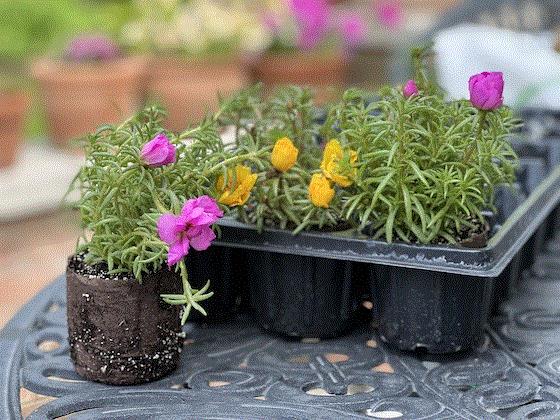
They sell individual plants for $1.99, and full 18-count trays for $22.95. That incentivizes customers to buy full trays, as it drops the price to about $1.30 per plant. He likes that it offers a lower price point for price-conscious customers. And he doesn’t mind folks mixing and matching – in fact, they encourage it – it’s a selling point. “They get to try a bunch of different stuff for the flat price,” he says.
Cost? He thinks his cost is under $3 for the flat of Ellepots. They come premade, so he doesn’t have to source soil and he’s ready to plant. Granted, it’s not a new idea, but when I see it, it’s usually aimed at landscapers, not consumers, which is why I found it worth a mention.
Spotted at local grocery chain Caputo’s (where Laurie once worked as a plant buyer) were these 50-count trays of annuals for the value price of just $12.99. I believe they were from Bert R. Hybels in Kalamazoo, Michigan. I asked Matthew Hybels about it via email but have not heard back anything yet.
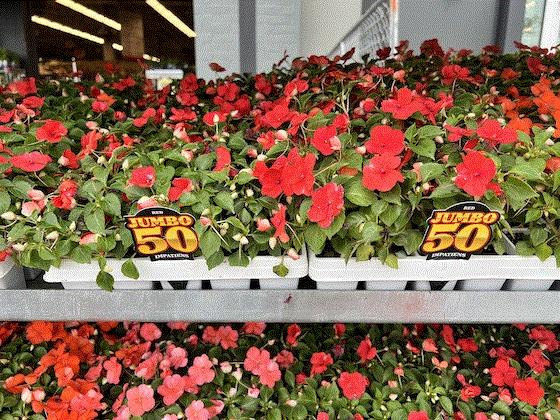
Once in a while I spot these big trays—reminds me of the “California 49er” tray with cells in a 7 x 7 square configuration. Anyone still growing those? Or anything else in a large or unusual configuration or an alternative container? Email me a photo and some details HERE.








Feel free to email me at beytes@growertalks.com if you have ideas, comments or questions. Beefs, even ... especially if barbecued!
See you next time!

Chris Beytes
Editor
GrowerTalks and Green Profit
This e-mail received by 25,730 loyal readers!
Thanks to my loyal sponsors, who help me reach the 25,730 readers of Acres Online in more than 60 countries. Want to be one of them (a sponsor, that is)? Give Paul Black a shout and he'll hook you up.